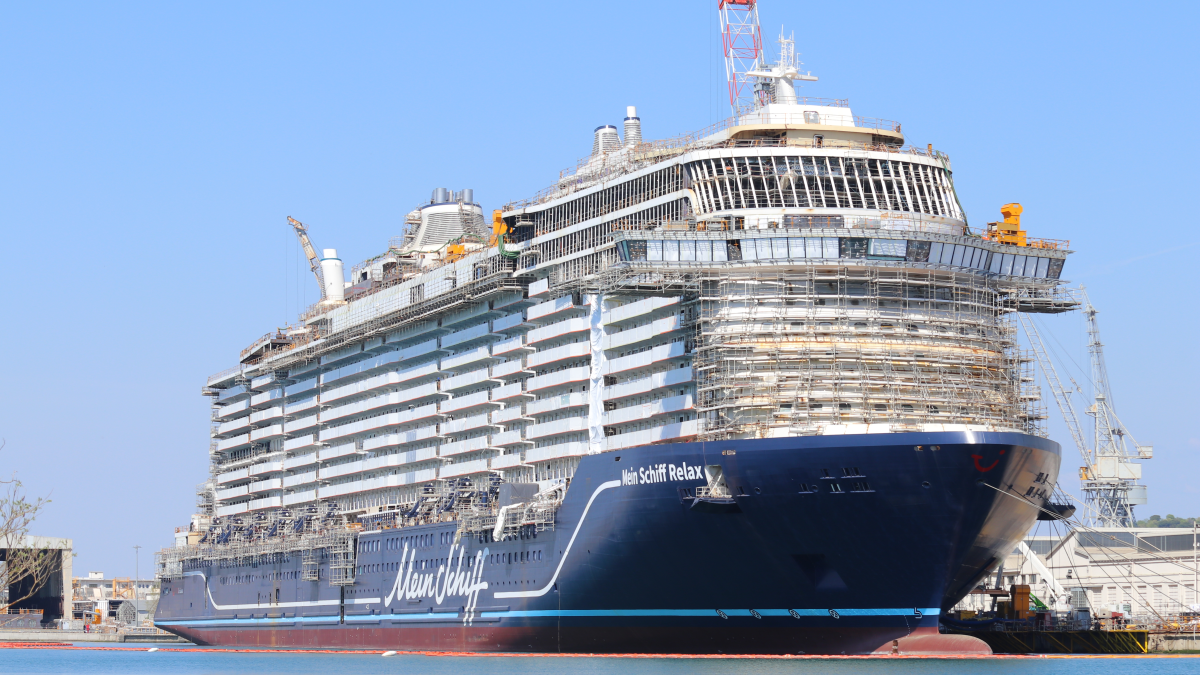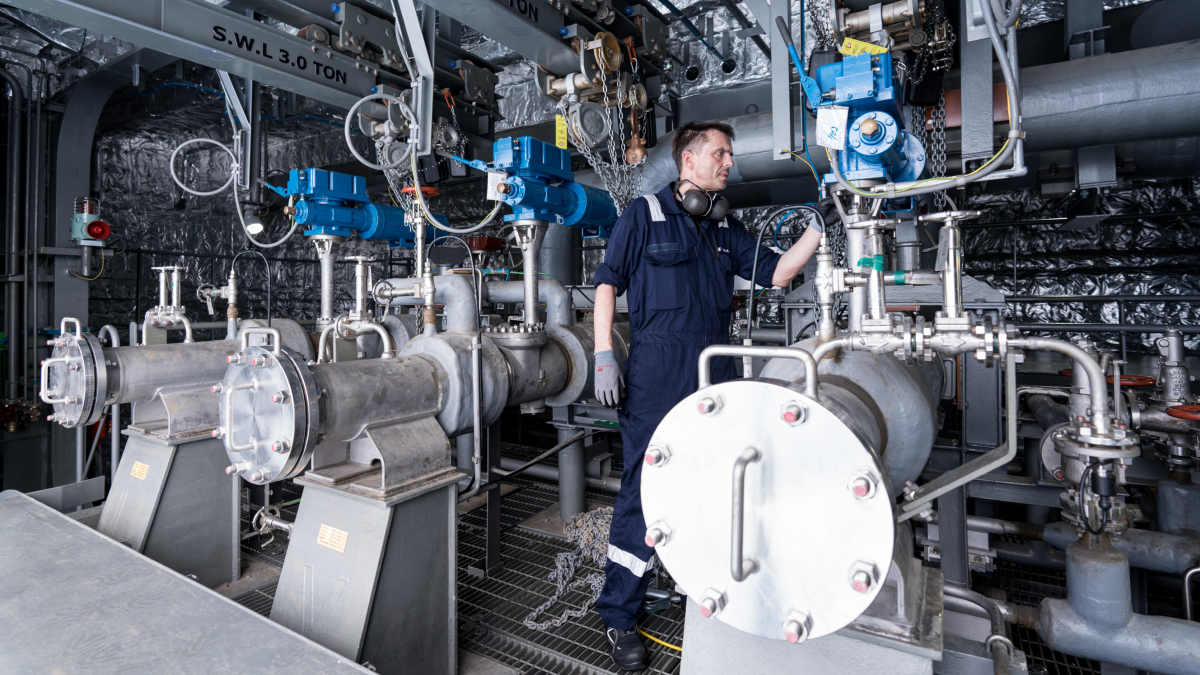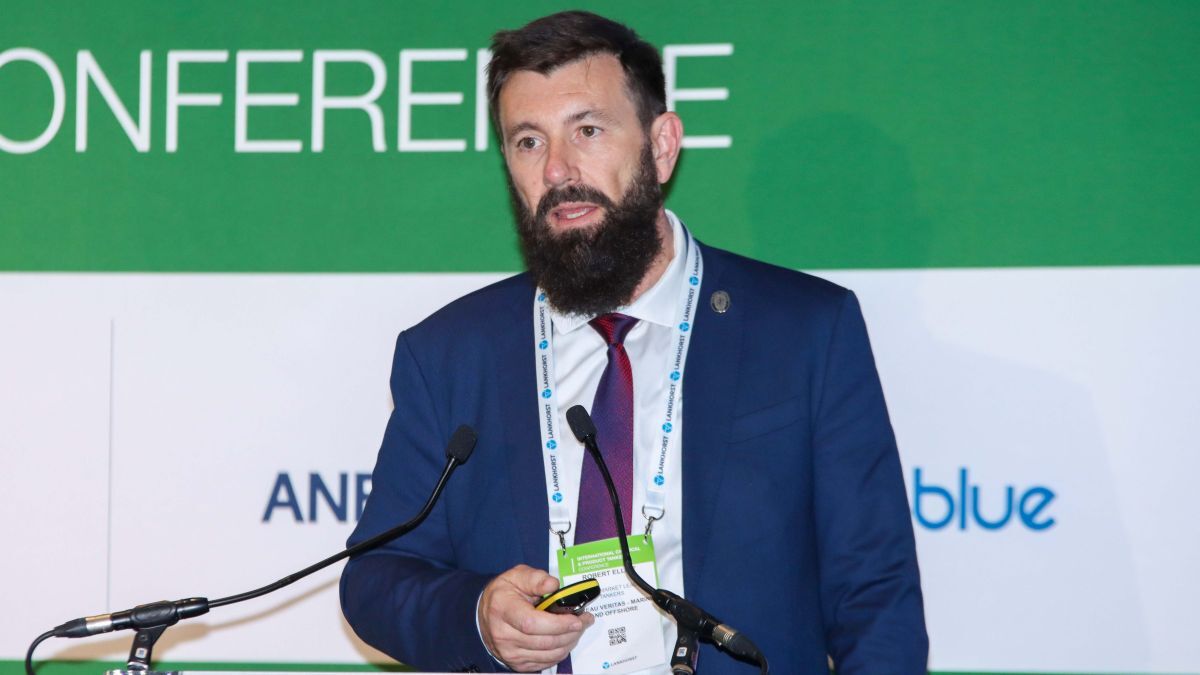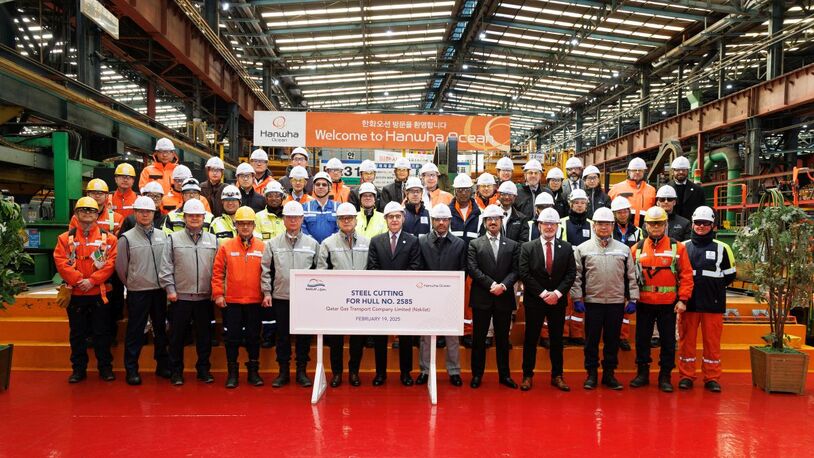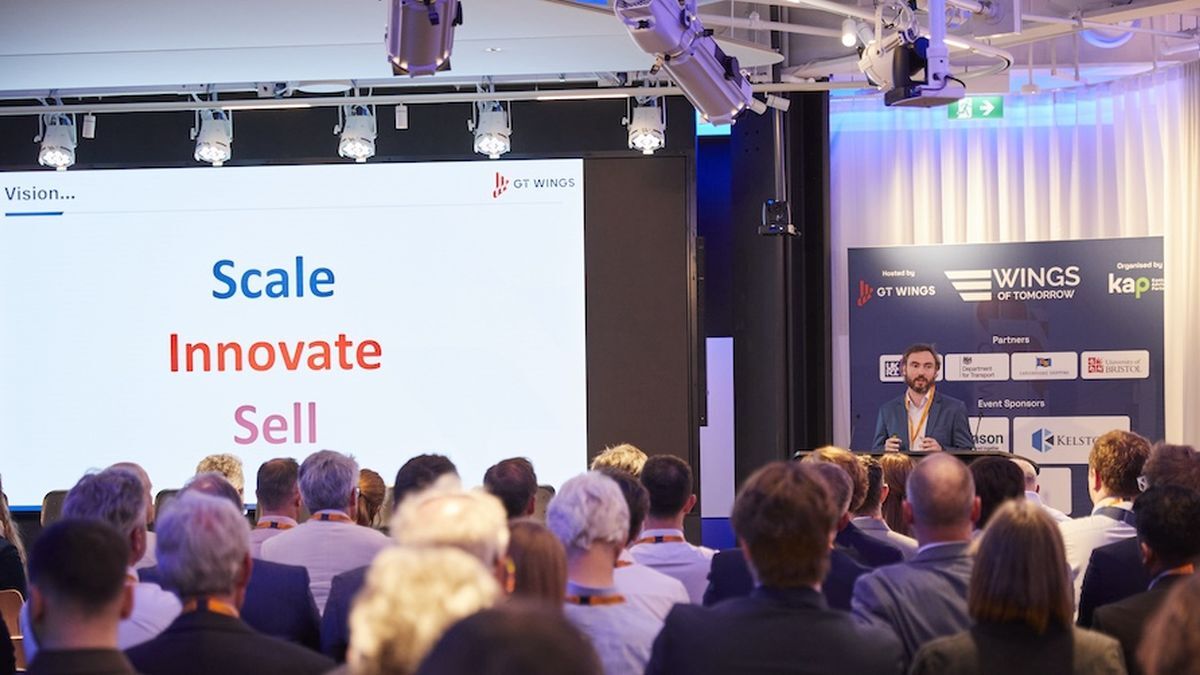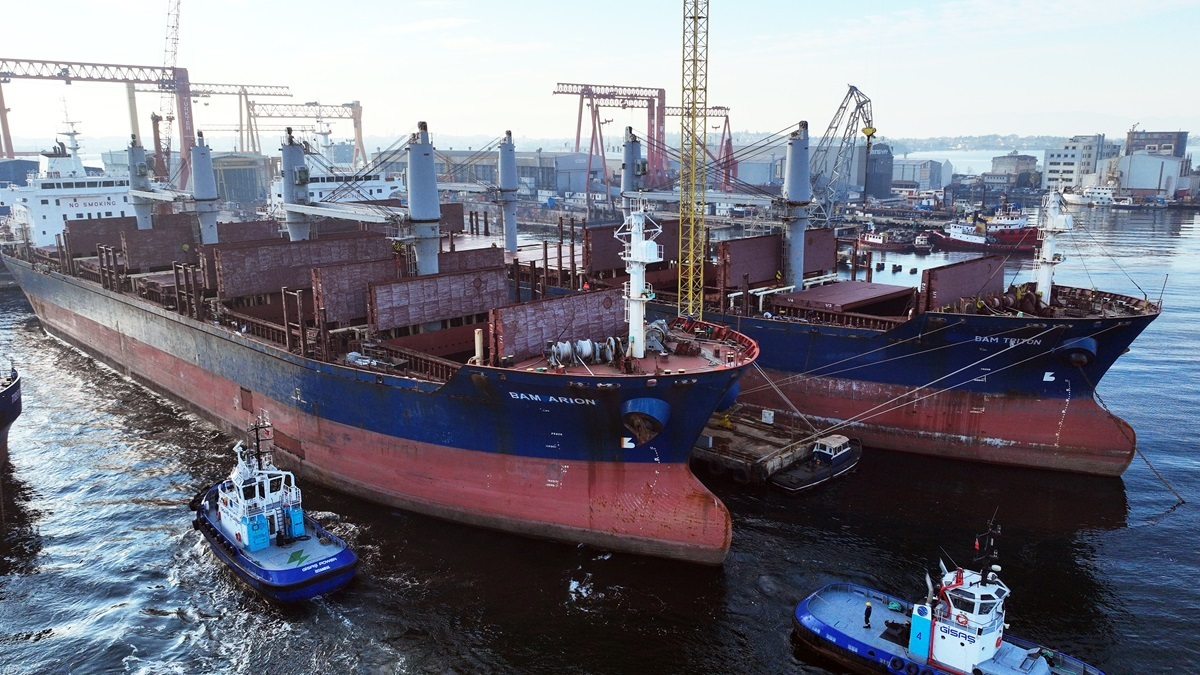Business Sectors
Events
Contents
Register to read more articles.
TUI Cruises joins the LNG pathway
With the launch of its new flagship, the German cruise line TUI Cruises is the latest to join a growing list of owners that have opted for LNG
Germany’s TUI Cruises has become the latest proponent of LNG as a fuel with the launch of its new flagship, Mein Schiff Relax, in early February. By 2028, the global fleet will have some 1,200 LNG dual-fuel ships in operation.
TUI’s new flagship is not only LNG fuelled, but it can also run on marine gas oil and bioLNG when the latter becomes available in sufficient quantities. As the first of two LNG-fuelled cruise ships, it is also a powerhouse of low-emissions technology with its Euro 6-standard catalytic converters, a generative turbine running on residual heat from diesel generators, and the latest shore power connections.
The vessel highlights the rapid inroads that LNG is making in the global fleet. In 2024, according to industry coalition SEA-LNG’s latest View from the Bridge, the orderbook for LNG-fuelled vessels grew by record levels, while bunkering volumes and other infrastructure kept pace with mounting demand.
The numbers tell a story of unstoppable growth in what has for a long time been considered an interim fuel. By the end of 2024, the percentage of LNG-fuelled vessels plying the oceans had in one year jumped by over 33% to 638 ships. In terms of the volume of alternatively-fuelled tonnage ordered, LNG dual-fuelled vessels accounted for an astonishing 70% of the total. And that excludes LNG carriers, the numbers of which jumped by 43% during 2024.
One consequence of this demand is that in January, South Korea briefly jumped ahead of China as the recipient of the most newbuild orders on the back of a record number of LNG carriers. In another vote of faith for LNG as a fuel, during 2025 HD Hyundai, the country’s largest shipbuilder, will deliver 26 LNG carriers.
Interestingly, Clarksons’ latest Green Technology Tracker, also breaks down newbuild orders by alternative fuels other than LNG, showing 49 for methanol, 15 for ammonia, 42 for LPG and four for hydrogen. Overall though, LNG is in the ascendant. “Excluding LNG carriers, the relative share of ordering of LNG fuel-capable tonnage increased compared to methanol-capable tonnage in the first half [of 2024] compared to 2023 levels,” the consultancy said.
Bunkering
As View from the Bridge points out, the all-important bunkering infrastructure is advancing rapidly in tandem with the acceptance of LNG. Today, vessels can fuel up at bunkering hubs in nearly 200 ports worldwide, while a further 78 ports are in the process of establishing their own hubs. The latest to sign up is South Africa’s Richards Bay, which announced mid-February that it will be the base for the country’s first LNG import terminal. Under the first phase of the development, the terminal will build to a capacity of 2M tonnes a year, eventually rising to 5M tonnes.
But beyond traditional bunkering, at least 60 LNG bunkering vessels are now at work, up by nearly a quarter over 2023. The overall result was another record – more LNG by volume was bunkered globally than ever before.
“Growth was driven by the commercial and environmental benefits of LNG”
SEA-LNG attributes the latest surge in LNG-fuelled ships and infrastructure to the recognition that it is just the first step in a pathway. “This growth was driven by the commercial and environmental benefits of LNG as a marine fuel and also the growing realisation that the LNG pathway offers the lowest cost of compliance with IMO and European Union (EU) greenhouse gas regulations”, the coalition maintains.
Container giants
Future prospects look no less promising, given the adoption of LNG by the big container alliances and other vessel types for their newbuilds. Class society DNV calculates that LNG dual-fuelled ships account for a third of the entire newbuild orderbook and that nearly half of all container vessels ordered in 2024 will be LNG dual-fuelled, while over 90%bof new orders for car carriers will adopt the fuel.
The flurry of orders through 2024 for LNG-fuelled container ships is particularly meaningful because they account for most of the tonnage on order. Between them, the container giants such as MSC, CMA CGM, Maersk and Hapag-Lloyd will greatly increase the fleet of dual-fuelled vessels over the next few years. Here, SEA-LNG member MSC is leading the charge by taking delivery of 92 vessels from 2025.
“Biomethane can be used seamlessly in ship engines”
“Many other owners are following these large operators”, reports SEA-LNG, which has its ear close to the ground. “Additional new buildings in future years are expected to continue to favour the LNG pathway,” it says.
But what exactly is this pathway? For SEA-LNG it is the progression beyond LNG to liquified biomethane and e-methane. Already biomethane is commercially available in bunkers in 70 ports worldwide, while e-methane is under development in most regions. In fact, Europe is on target to sell its first e-methane bunker fuel in 2026.
Clearly, the coalition sees LNG as a precursor to better things: “LNG is a future-proof solution as the LNG pathway provides a seamless transition to liquefied biomethane and eventually, renewable hydrogen-based liquefied e-methane.”
Also known as LBM and bio-LNG, biomethane is produced by the natural breakdown of biomass and unlike biomethanol, does not require an extra industrial process to create. “Biomethane can be used seamlessly in ship engines which typically run on regular LNG”, explains SEA-LNG. “It can be easily transported, stored and bunkered in ports with LNG infrastructure. There is no need for vast levels of investment and time to build new, specialised infrastructure,” it says.
Additionally, there are already significant supplies of biomethane available. Albeit from a low base, biogas and biomethane production grew by 21% in Europe during 2023 and by over 18% in the US. China and India are also important producers. In another step along the pathway, in mid-2024 German energy group Uniper joined three other companies – Gasum, Shell and Titan Clean Fuels – in the production of liquefied biomethane at Rotterdam’s GATE terminal.
Related to this Story
Events
Maritime Environmental Protection Webinar Week
The illusion of safety: what we're getting wrong about crews, tech, and fatigue
Responsible Ship Recycling Forum 2025
© 2024 Riviera Maritime Media Ltd.


